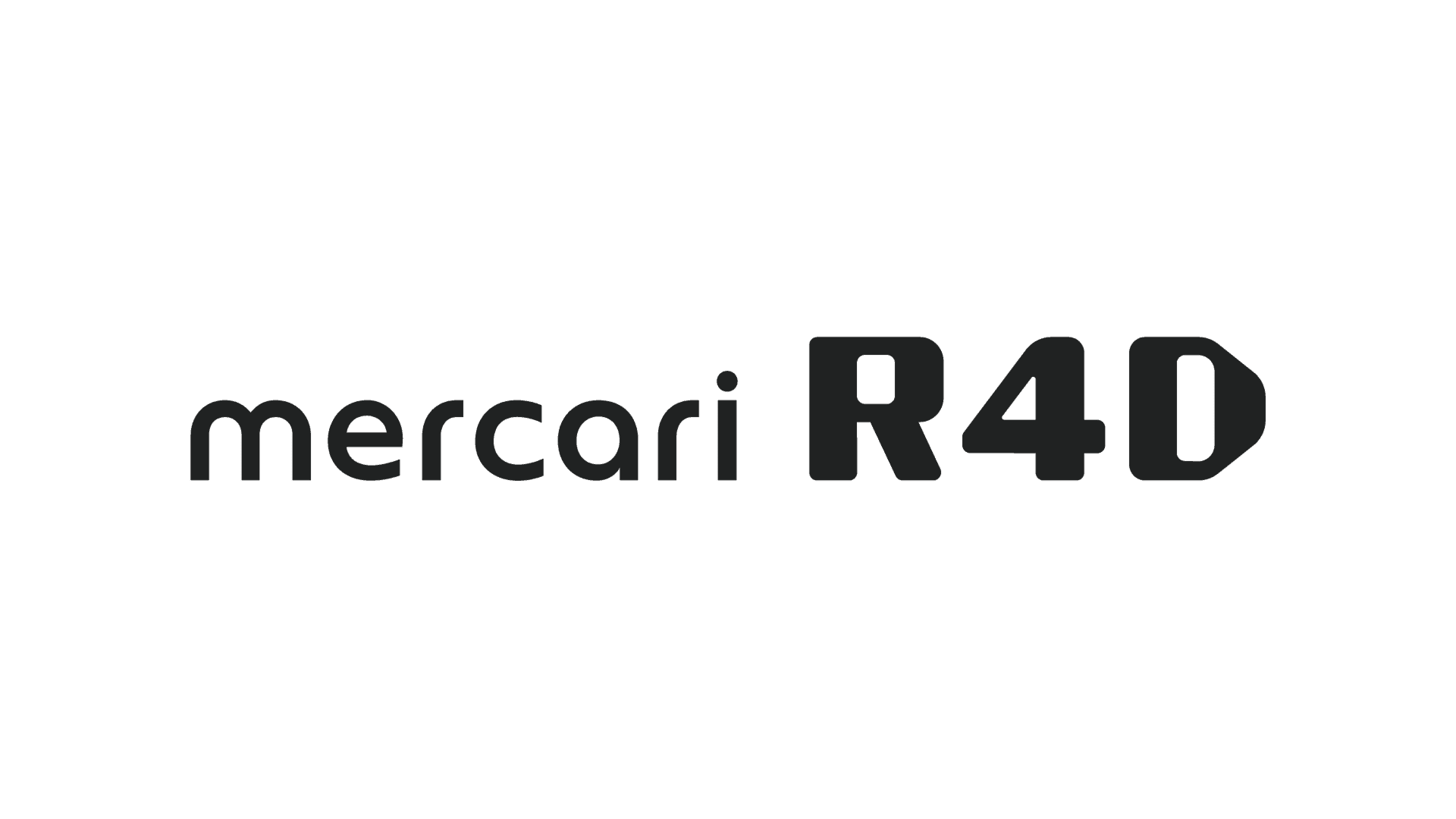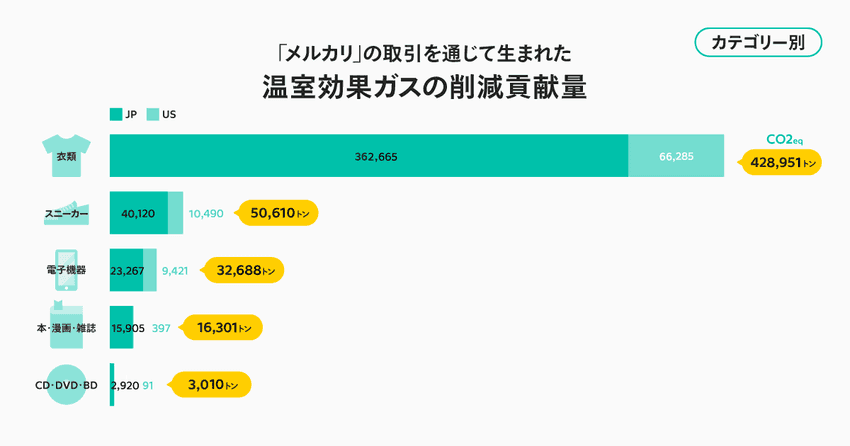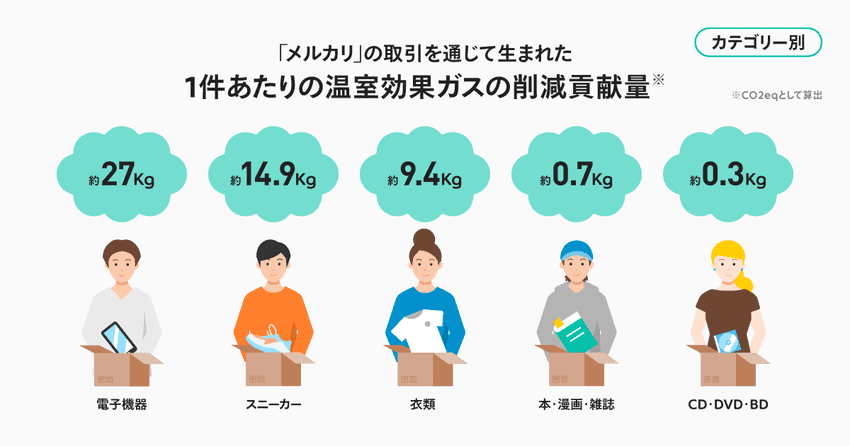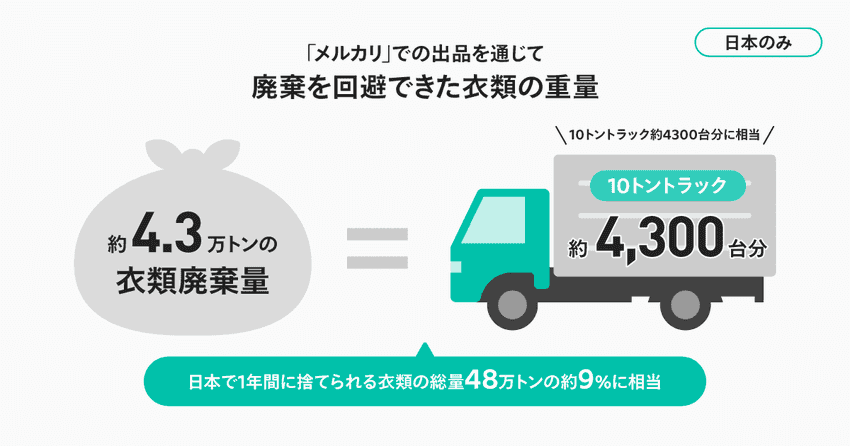Mercari, Inc. (“Mercari”) and The University of Tokyo’s Research Institute for an Inclusive Society through Engineering (RIISE) announce the results of the calculated contribution for avoiding (reduction contribution) greenhouse gas (GHG) emissions generated through transactions on the Mercari marketplace app.
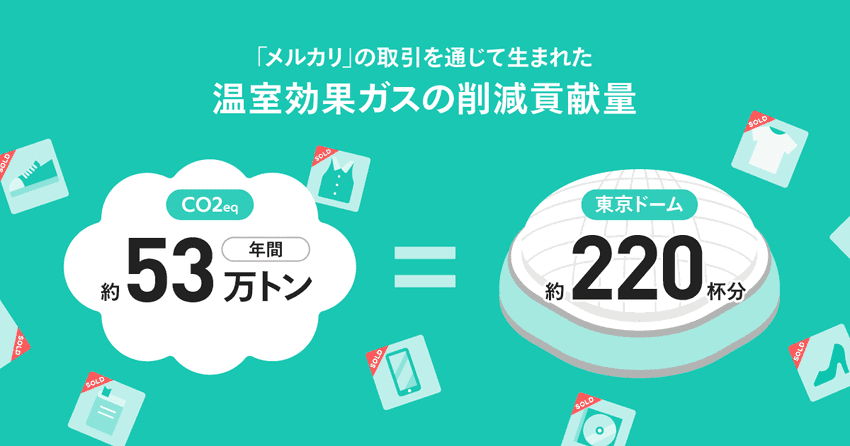 *The images in this press release are only available in Japanese
*The images in this press release are only available in Japanese
At Mercari, where we aim to create a circular economy that makes the most of the world’s finite resources, we have implemented a variety of initiatives through our business and corporate activities. As one such activity, Mercari and The University of Tokyo RIISE’s collaborative research division “Value Exchange Engineering” worked together to calculate1the greenhouse gas reduction contribution of Mercari transactions.
Value Exchange Engineering is a research department established in 2019 between The University of Tokyo RIISE and Mercari’s research and development organization Mercari R4D, aiming to create a world where anyone can exchange value fairly and smoothly. This initiative is part of a larger Value Exchange Engineering research project called “Usage of Product and Service Systems for Sustainable Consumption and Production: Consumption Value of Used Products” (Researcher: Moon Dami).
*Visit the Mercari R4D website for more details:https://r4d.mercari.com/en/
Greenhouse gas reduction contribution through Mercari transactions
According to the results2 of calculating the reduction contribution across five categories, researchers discovered that through Mercari transactions in both Japan and the US, we avoided approximately 530,000 tons of greenhouse gas emissions annually. The categories examined were “Apparel” (Women’s Fashion, Men’s Fashion, and Babies & Kids); “Sneakers” (Women’s Fashion, Men’s Fashion, and Kids); “Electronics” (Computers, Smartphones, and Tablets); “Books, Comics & Graphic Novels, and Magazines;” and “CDs, DVDs, and BDs (Blu-ray Discs)”3.This is equivalent to approximately 220 covered baseball stadiums.4
In a breakdown by category, annual transactions on Mercari for “Apparel” made the greatest contribution, avoiding 430,000 tons of greenhouse gas emissions. On a per-unit basis, the reduction contribution resulting from a single apparel category transaction avoided the equivalent of approximately 9.3 kg of greenhouse gases.
Breakdown of greenhouse gas reduction contributions through Mercari transactions by category
- Apparel: 426,952 tons (Japan: 360,472 tons; US: 66,481 tons)
- Sneakers: 50,902 tons (Japan: 40,283 tons; US: 10,619 tons)
- Electronics (Computers, Smartphones, and Tablets): 32,580 tons (Japan: 23,166 tons; US: 9,415 tons)
- Books, Comics & Graphic Novels, and Magazines: 16,418 tons (Japan: 15,985 tons; US: 433 tons)
- CDs, DVDs, and BDs: 3,007 tons (Japan: 2,915 tons; US: 92 tons)
Breakdown of contributions to avoiding greenhouse gases (per transaction) through Mercari transactions by category
- Apparel: Approx. 9.3 kg
- Sneakers: Approx. 14.9 kg
- Electronics (Computers, Smartphones, and Tablets): Approx. 27 kg
- Books, Comics & Graphic Novels, and Magazines: Approx. 0.7 kg
- CDs, DVDs, and BDs: Approx. 0.3 kg
Note that researchers calculated greenhouse gas reduction contributions under the assumption that the items bought and sold for each category were used instead of new products, thereby avoiding greenhouse gas emissions. Taking into account product lifecycle, such as item production, distribution, usage, and disposal, researchers estimated the contributions to avoiding greenhouse gas emissions by calculating the amount of greenhouse gas emissions generated in the shipping of items between Mercari users as well as based on the frequency of use of Mercari and the product use life (in years) calculated from the results of a Mercari user survey.5 6
Weight of apparel waste avoided thanks to its listing on Mercari (Japan only)
In Japan alone, users avoided approximately 43,000 tons of apparel waste (by weight) by listing items they no longer needed on Mercari. This is equivalent to approximately 9% of the total 480,000 tons of apparel thrown away annually in Japan.7 By buying and selling no-longer-used apparel on Mercari instead of throwing it away, users can reduce the burden on the environment and move closer to creating a circular economy.
Through the various partnerships between Mercari and The University of Tokyo RIISE, we are aiming to create a circular economy that makes the most of the world’s finite resources.
- US numbers were calculated independently for Mercari (US) by referencing the calculations used as the basis for analyzing data for the Mercari app in Japan↩
- Set for used items purchased on the Japan and US Mercari marketplace apps for which transactions were completed from April 2022 to March 2023 in the following categories: Women’s Fashion, Men’s Fashion, Babies & Kids (the preceding three categories include the Sneakers category); Computers, Smartphones, and Tablets; Books, Comics & Graphic Novels, and Magazines; CDs, DVDs, and BDs.↩
- GHG reduction contribution by reusing items in place of buying new items = Amount of GHG emissions generated by making new items - Amount of GHGs generated by reusing items= (Number of new items equivalent to used items x GHGs generated by making new items) - (Number of used items x GHGs generated by selling used items), Reduction of GHG emissions by reusing electronic devices (extension of product use life) =Amount of GHGs generated by using new items - Amount of GHGs generated by reusing items = (Number of new items used x Amount of GHGs generated by new items) -(Number of items whose product use life is extended by the use of items ranging from new to used x Amount of GHGs generated by using items ranging from new to used)↩
- Volume of CO2 equivalent to one covered baseball stadium: Approx. 2,436 t -CO2 (Volume of Tokyo Dome: 1.24M m3 = 1,24M kL, 1 mol = 22.4 L = 44 g - CO2, Source: Tokyo Dome webpage https://www.tokyo-dome.co.jp/faq/dome/↩
- Summary of Mercari user survey:【Apparel and Sneakers categories】Period: January 30 to February 3, 2023, Target: Users who listed or purchased items on the Mercari marketplace app in the apparel categories, Method: Mercari app survey, Number of respondents: Listers: 18,137, Buyers: 13,696 【Electronics category】Period: January 19 to January 25, 2023, Target: Users who listed or purchased items on the Mercari marketplace app in an electronics category, Method: Mercari app survey, Number of respondents: Listers: 16,174, Buyers: 10,699 【Books & Music category】Period: June 26 to July 2, 2023, Target: Users who listed or purchased items on the Mercari marketplace app in a books or music category, Method: Mercari app survey, Number of respondents: Listers: 4,264, Buyers: 2,812↩
- The amounts of GHG emissions generated from materials and energy used to calculate the amount of GHG emissions cited in this release were based on figures referenced mainly from the “IDEA v3.2” LCI database.↩
- Calculated based on the number of items listed in the Women’s, Men’s, and Kids’ categories for Mercari in Japan from April 2022 to March 2023. Weight of apparel taken from the Ministry of Economy, Trade and Industry’s data. (Source: Ministry of Economy, Trade and Industry “Survey on Measures to Revitalize the Textile and Clothing Industry https://warp.da.ndl.go.jp/collections/info:ndljp/pid/1621320/www.meti.go.jp/report/downloadfiles/g20523b01j.pdf)↩
